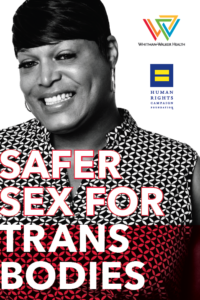This spring, some of you beautiful souls helped me achieve a HUGE professional goal: attending the American Congress of Obstetricians and Gynecologists Conference annual conference.

Thank you to everyone who donated!
It was an amazing learning experience and I am still parsing through some of the new medical content I greedily absorbed during 3 days of intense learning. But in some ways, the journey to ACOG was as informative as the conference itself.
Some of you know from my social media presence that getting to this conference meant pulling in every favor I had stored up. A number of you donated nearly $600 to cover my registration. 2 other wonderful friends chipped in airline miles to help me get out to San Diego. Multiple kind souls offered up couches to crash on.
Frustratingly, any time that I inquired about financial assistance for the conference– the hefty cost of which is usually footed by an employer– I was told that no options existed. No community housing. No reduced registration. No travel grants. The conference only served 1 community meal in three days.
The medical community has always been an enclave of the hyper-wealthy, and it’s obvious enough when you step inside the ACOG exhibit hall. Million-dollar displays from Bayer and high-end medical technology companies were accented by ridiculous perks: free cinnamon buns baked on site, cocktails mixed for you by a dedicated server staffed by the industry partner. A seat at this table costs $2000 just to get in the door.
But what does this mean for the quality of the conference? Yes, everyone likes free ice cream and fancy massage chairs (OH YES).
But all this money misses the mark when it comes to inclusive programming that addresses the most vulnerable populations served by the medical community.
Looking around the conference halls, I couldn’t help but notice the people who were not present: people of color, visibly LGBTQ and disabled people, those socioeconomically disadvantaged, rural populations. These are communities already disproportionately shut out from medicine as a practice. The economic and social wherewithal and connections it takes to make it through med school and residency are out of reach for so many. Candidate pipeline projects, extensive diversity outreach initiatives, and specialty programming are trying to change that for new med school candidates. Medical schools are recognizing the systemic challenges cutting off marginalized future doctors at the start gate. So why do medical conferences act as if these challenges no longer apply once a student has graduated?
What I saw at ACOG was this: an appalling lack of content dedicated to population based health, and a lack of consideration for any diversity in the room.
There was not a single session dedicated to disability, rural health, people of color, or sex work. The session I attended which addressed sexual violence/assault was not trauma-informed and focused on medical evidence/photography for criminal court proceedings. There was no social worker on staff for people who became triggered. There was no accessibility liason. There were, to the credit of presenters, two LGBT-focused sessions. But by and large, marginalized communities were not represented in the learning or structure of ACOG’s conference.
Now this is not news.
We know that marginalized people know and talk about marginalization more than white, straight, cis, able-bodied people.
We know that marginalized communities have to work harder to get their voices heard, their needs met, their identities acknowledged in systems that were not set up for them.
We know that accommodations for disability or spaces dedicated to marginalized communities do not just appear. They are FOUGHT FOR by their community members.
So it is with tech. And academia. And government. And medicine.
We need the voices of these communities. We need the original research, the clinical education, the rigor and focus of population-based health. We need educators and attendees who can remind us of the historical context through which marginalized communities understand and interact with medicine.
There is undeniably a history of traumatic, power-over relationships in how doctors interact with patients, particularly minorities like people of color and LGBT people. I like to remind medical providers that there is a reason some patients come in not trusting their doctor. Those patients are carrying decades of historical trauma:
- From the doctors who performed unethical experiments on people of color like the Tuskegee syphilis trials
- From the institutionalization and shock-therapy treatments of LGBT people thought to be clinically insane
- From the practice of performing pelvic exams on unconsenting anesthetized women
- From the abandonment of mentally and physically disabled people after deinstitutionalization of mental asylums in the 70’s
- From the refusal of care that all of these groups have experienced throughout medical history
The specific healthcare needs of marginalized communities do not exist in a vacuum. They are borne of the historical mistreatment by the medical community. That awareness was not in the room at ACOG, and it was sorely missed. My guess is that such awareness is missing at many medical conferences.
Probably because those communities are not in the room.
Probably because it costs well over $1000 to attend a medical conference in the United States.
Probably because it’s exhausting to be in space where your identity is invisible. Where there are no resources for you if you are mentally ill, disabled, or poor.
Probably because the burden of attendance is too high for a gynecologist in a rural health clinic, or a queer community health worker, or a black woman in her first year of residency.
But it doesn’t have to be that way. Investing in marginalized communities can and has been done by industry and general public conferences. It takes some time and elbow grease, but it’s worth it.

The Philadelphia Transgender Health Conference is the most radical example of accessible conference design. Not only is attendance free, but they strategically partner with the community to offer a variety of supports to attendees:
- Community housing assistance for those who cannot afford a host hotel
- Donation-based meals from local parishes and non-profits
- Programming and spaces designated for people with disabilities, including intellectual and developmental disabilities
- Programming dedicated to people of color, intersex individuals, sex workers, and older adults

The Woodhull Sexual Freedom Summit, while not free, creates a number of strategic partnerships and investments to make attendance feasible for more people.
- Volunteer opportunities
- Scholarships and sponsorships for bloggers to cover the conference, creating a win-win publicity situation
- Active partnership with advocacy groups like WOCSHN to bring in programming and attendees from marginalized communities
- Accessibility committee chaired by multiply-disabled people who liaise with attendees needing accommodation
While neither of these conference are perfect, both have done extensive work to grow their capacity to serve marginalized attendees year after year. The medical community should aspire to such a high standard for its conferences.



